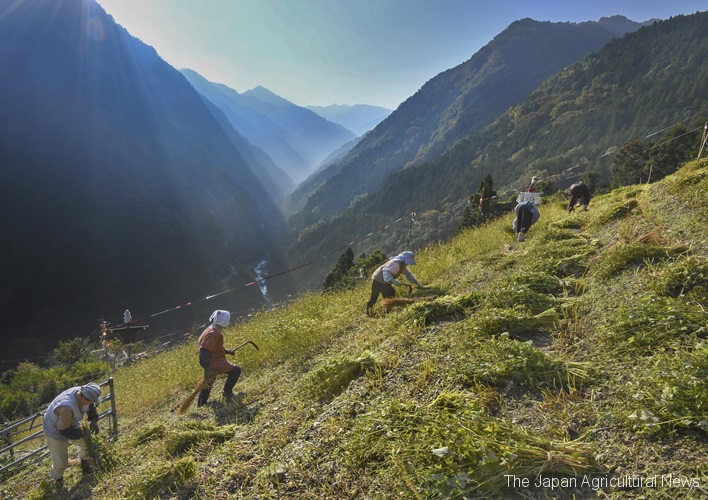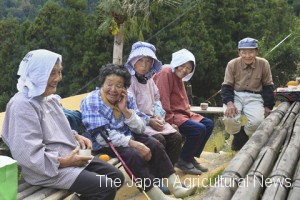TOKUSHIMA, Nov. 12 – Peak season for buckwheat harvest began in the fields in the mountains in the western part of Tokushima Prefecture, in the area designated by the Ministry of Agriculture, Forestry, and Fisheries as one of the agricultural heritages in Japan in 2016. The steep slope farming system here in Nishi Awa region is very unique, traditional, and considered so rare in the world that it’s one of the candidates for the world agricultural heritage of Food and Agriculture Organization (FAO) of the United Nations.
Nishi Awa comprises four areas: Mima, Miyoshi, Tsurugi, and Higashi-Miyoshi. At the sloped fields in a 350-meter-high-altitude Sakurai Village in Tsurugi town, a farmer of 76 years of age Haruki Nishiokada was mowing buckwheat, walking lightly up and down the hill while enjoying the great view of the Sadamitsu River that runs far below through the mountains. In general, a 10-degree slope is very steep for farming, but the village has its fields on a hill of over 15 degrees or 40 degrees at the maximum.
No doubt it’s difficult to stand up straight on such a steep slope. The farmers, however, grow more than 140 products by mixing susuki (Japanese pampas grass) into soil to prevent it from running down and by making full use of the tools that are specifically designed for the steep slope farming. The farm ministry recognized the efforts of the people who successfully kept the culture and traditions for more than 400 years.




